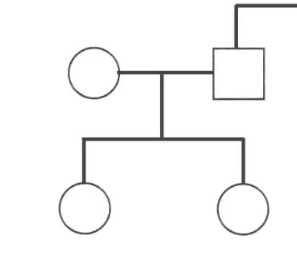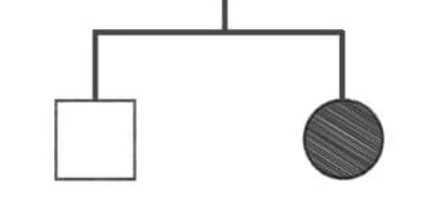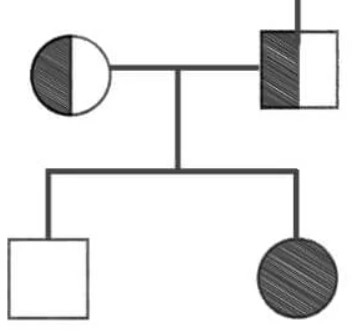Our Journey to Now: Outcome 10
1/16
There's no tags or description
Looks like no tags are added yet.
Name | Mastery | Learn | Test | Matching | Spaced |
|---|
No study sessions yet.
17 Terms
What is the use of pedigree charts?
To show how an inheritance trait is passed through a family.
What is the symbol for females?
Circle
What is the symbol for males?
Square
What is the symbol for people without traits?
Unshaded
What is the symbol for people with traits?
Shaded
What is the symbol is someone has a recessive allele/is a carrier?
Half-shaded
How do you show the relation between a married couple?
Line connecting the midpoint of circle/square and circle/square

How many children does this couple have?
Two; both daughters

Are these people married?
No, they’re siblings

Who’s affected, who’s not, and who are characters?
Affected: Daughter
Not affected: Son
Carriers: Mother & Father
How are generations in a family pedigree numbered?
They are numbered using roman numerals, with the youngest generation being at the bottom.
How can we tell which siblings are the oldest in pedigrees?
Siblings are placed in birth order from left to right (oldest = far left, youngest = far right)
What does slashes through the symbols mean?
It means the person has died
Autosomal dominant
Both parents are affected and offspring is unaffected - trait must be dominant (parents must be heterozygous)
all affected individuals must have one effected parent
If both parents are unaffected, all offspring must be unaffected (homozygous recessive)
Autosomal recessive
If both parents are unaffected and the offspring is affected, the trait must be recessive, with the parents being heterozygous carriers
If both parents show a trait then the offspring will show a trait (homozygous recessive)
X-linked dominant
If a male shows a trait, all daughters as well as his mother must show the trait
Unaffected mothers cannot have affected sons
Tends to be more common in females
X-linked recessive
If a female shows a trait, all the sons and her father must show the trait
UNaffected mothers can have affected sons if she is a carrier (heterozygous)
X-link recessive tend to be more common in males